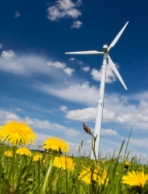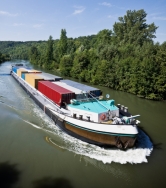By Brian Magerkurth
Vice President -Global Supply Chain
Teva Pharmaceuticals
Customer expectations are at an all-time high. They want the ‘right’ product to be at the ‘right’ place at the ‘right’ time. The suppliers’ quest to meet these expectations has resulted in supply chain inefficiences such as excess inventory, escalating logistic costs, and overall waste. These issues have been the traditional focus of most supply chain leaders, along with how to beat last year’s cost budgets.
So what has been done to overcome these problems? Initiatives such as cubing out trailers, reducing road mileage, turning off lights, utilizing alternate transportation methods, reducing premium or air freight, and consolidating space within warehouses, have been used for years, making Supply Chains a nice shade of Green. But is it Green enough?
Over the past few years, Greening the Supply Chain has become even more popular in companies’ Sustainability Programs. It is perceived by the C-Suite that there is still plenty of opportunity left. In order to continue to Green the supply chain, it is going to take more than just water, sunlight and fertilizer, it is going to take creativity, customer relationship management, and/or capital.

Many companies are taking bigger steps towards being Green. In Europe, with typically higher energy costs than the US, it is becoming more and more popular to install Windmills on site of large Distribution Centers for power generation. These windmills can have an ROI within the first few years. Windmills greatly reduce the carbon footprint of large centers and can also qualify for government incentives.
Another popular initiative is to install solar panels on the roofs of distribution centers (DC). Many DC’s are simply storage type buildings and require relatively little power to operate, versus the high power requirements of most manufacturing facilities. Therefore, the solar power generated by the panels can be sufficient to run these buildings, or at least offset the majority of the electrical power required.
 And finally, with the escalating cost of fuel, companies are even more willing to reduce transportation requirements, turning their Supply Chains Greener. An excellent example of reducing carbon emissions is the increased use of water traffic versus air, road or rail. With the right inventory planning, barges on rivers can be a very effective mode of transportation. Planners may need to add an extra day or two of inventory, but given the high cost of fuel, this creative initiative can be cost-effective as well as healthy for the environment.
And finally, with the escalating cost of fuel, companies are even more willing to reduce transportation requirements, turning their Supply Chains Greener. An excellent example of reducing carbon emissions is the increased use of water traffic versus air, road or rail. With the right inventory planning, barges on rivers can be a very effective mode of transportation. Planners may need to add an extra day or two of inventory, but given the high cost of fuel, this creative initiative can be cost-effective as well as healthy for the environment.
So, even if your supply chain is already a nice shade of green due to your many cost cutting initiatives over the past few years, it is possible to darken that shade of Green by: 1) Continuing to be creative and exploring alternate energy sources; 2) Working with your customers and re-leveling their service expectations, optimizing inventory levels and modes of transportation; and 4) Investing in the future when building the DC’s of tomorrow, by installing green energy producing technologies.

Your list of articles has grown nicely, Steve. Very good to see! C
Congratualations on this initiative.
I like your article on Fast vs. Smart…but as a Sky Diver, it is next to impossible to overcome the effects of gravity and “slow down”…. But having said that, perhaps I can “fly smarter”….I’ll just deploy the chute a little higer! That should slow me down.
cheers, Brian